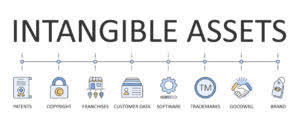
You can calculate the current ratio by taking current assets and dividing that figure by current liabilities. Generally, the higher the ratio, the better an indicator of a company’s ability to pay short-term liabilities. You might ask, “how does a company change its net working capital over time? ” There are three main ways the liquidity of the company can be improved year over year.
- For example, if the reserve is calculated based on a percentage of total accounts receivable or revenue, it should be increased as the value of accounts receivable or revenue increases.
- After almost a decade of experience in public accounting, he created MyAccountingCourse.com to help people learn accounting & finance, pass the CPA exam, and start their career.
- If NWC comes in below target, the seller will pay the buyer the difference, resulting in a lower purchase price.
- If you can increase sales and minimize inventory levels, the ratio will increase.
- Working capital is a core component of effective financial management, which is directly tied to a company’s operational efficiency and long-term viability.
- In most cases, buyers estimate working capital based on a historical average, typically an average and normalized or adjusted NWC for the trailing 12 months.
Definitions
While the actual amounts will change, the accounts and vendors will have been identified and a formula accepted to prevent disputes. The most common approach to valuing accounts receivable is to determine the receivables net of a general reserve for doubtful accounts. But, it’s important to understand on what basis the reserve was calculated so it can be updated for changes in the business. For example, if the reserve is calculated based on a percentage of total accounts receivable or revenue, it should be increased as the value of accounts receivable or revenue increases. Reserves can either be general, where they apply to all accounts receivable, or specific, where they apply to a single account receivable, such as one that’s slow-paying or otherwise in trouble. But acquirers don’t necessarily need all the components of current assets and don’t always assume all the seller’s current liabilities.
How to Calculate Working Capital Cycle
NWC gives a buyer a clear idea of the level of capital required to keep the business running. If your business requires a significant amount of working capital to operate, then you must understand net working capital before you sell. NWC may constitute a significant percent of the purchase price, and any mistakes you make in the calculation or when negotiating terms will have a material impact on your net proceeds. Small business owners can maintain good relationships with vendors by paying them on time. If you can speed up your cash inflows, you can make timely payments and maintain a sufficient cash balance. While working capital is a key indicator of your business’s short-term financial health, you need to recognize its limitations to get a complete picture of your financial situation.
The M&A Process

Relying solely on working capital can give you a skewed view of your business’s overall health. Working capital focuses on a business’s ability to cover immediate expenses but doesn’t account for its overall profitability. Your business can have positive working capital yet still struggle to turn a profit. Suppose an appliance retailer mitigates these issues by paying for the inventory on credit (often necessary as the retailer only gets cash once it sells the inventory). Therefore, the working capital peg is set based on the implied cash on hand required to run a business post-closing and projected as a percentage of revenue (or the sum of a fixed amount of cash).
Operating Working Capital Formula
- Past a certain number of days in accounts payable, the buyer will consider those invoices effectively funded debt and exclude them from the calculation.
- Estimating how much working capital is required helps the buyer avoid any unanticipated cash infusions after closing.
- Implementing effective inventory management can have a positive impact on accounts payable, receivable, operations, and the overall growth of a business.
- To add up your liabilities, collect any unpaid invoices to find your outstanding accounts payable.
- Working capital, also called net working capital (NWC), is an accounting formula that is calculated by subtracting a business’s current liabilities from its current assets.
- In simple terms, working capital is the net difference between a company’s current assets and current liabilities and reflects its liquidity (or the cash on hand under a hypothetical liquidation).
In some cases, the amount, such as the net working capital peg, is not included in the LOI, which commonly leads to disagreements later in the negotiations. The LOI can state an acceptable methodology to calculate a peg in lieu of an actual target, which may be further defined during financial due diligence. Utilize modern accounting software or enterprise resource planning (ERP) systems to get real-time insights into your financials. These tools can help you track cash flow more accurately, predict future cash needs, and make informed decisions quickly.

She can use this extra liquidity to grow the business or branch out into additional apparel niches. The net working capital calculation is an essential financial metric used to measure the deviation or divergence between an entity’s current assets and current liabilities. Every business enterprise extensively uses this metric to understand the economic or financial condition of the enterprise. To prevent an erosion in value, it’s best, as the seller, to undergo a QoE analysis before you begin the sales process, and work to define working capital as clearly as possible in the LOI. Twelve months is the most commonly used timeframe as it incorporates seasonality in the business’s cash flow.
Q. Does NWC impact a company’s ability to secure long-term financing?

However, focusing on the most important metrics like working capital can unearned revenue help you stay organized. By analyzing the ratios and following the various tips mentioned above, you’ll be better able to make changes to your business structure to help improve growth and drive results. If inventory is a large component of your cash outflows, monitor your purchases closely. Buy enough inventory to fill customer orders but not so much that you deplete your bank account—less inventory leads to more cash flow that’s freed up. You should have a written policy for collecting money, and the policy must be enforced to increase cash inflows.

It means that the company has enough current assets to meet its current liabilities. If all current liabilities are to be settled, the company would still have $430,000 left to continue operating. Net working change in net working capital capital, or sometimes just “working capital”, refers to short-term assets left after deducting short-term liabilities.

On the subject of modeling working capital in a financial model, the primary challenge is determining the operating drivers that must be attached to each working capital line item. You can find accounting software that automatically tracks working capital for you. Learn about the Waste Book, why it’s https://www.bookstime.com/ the oldest book in accounting and how it’s still relevant today.